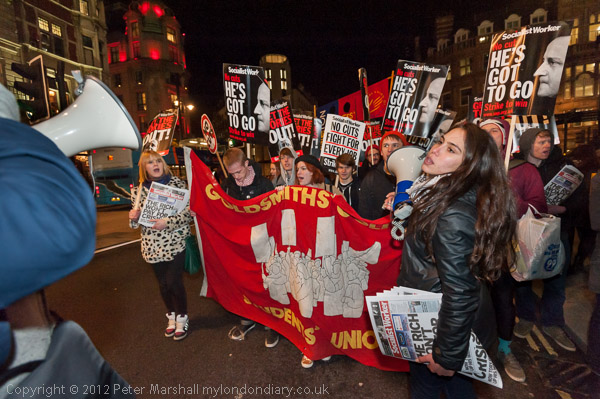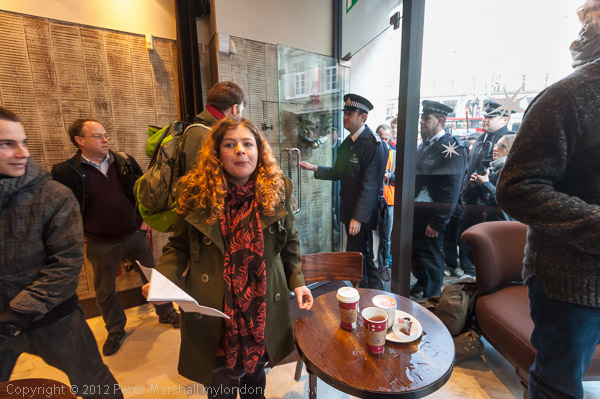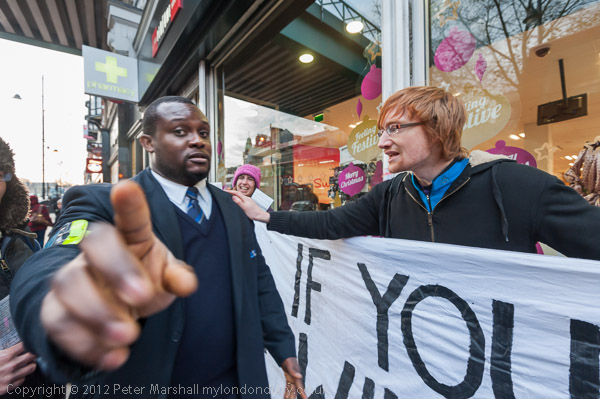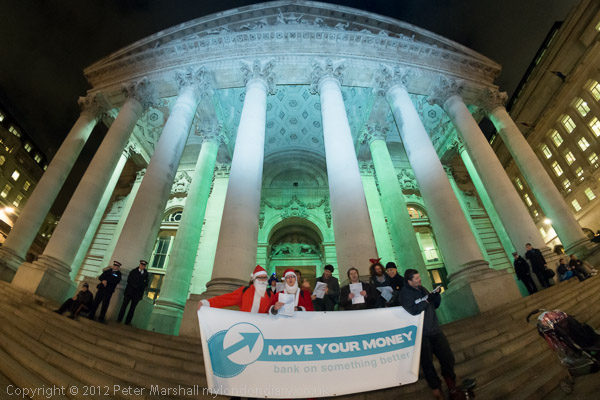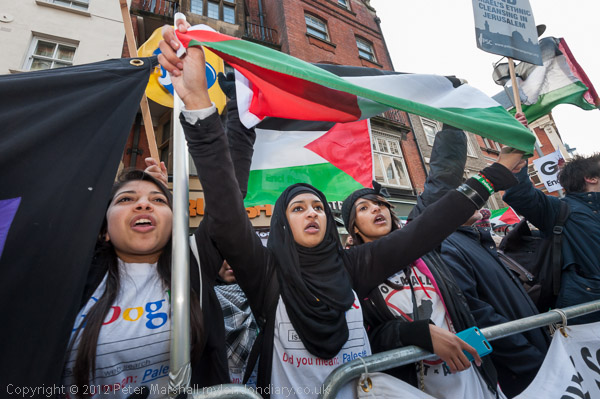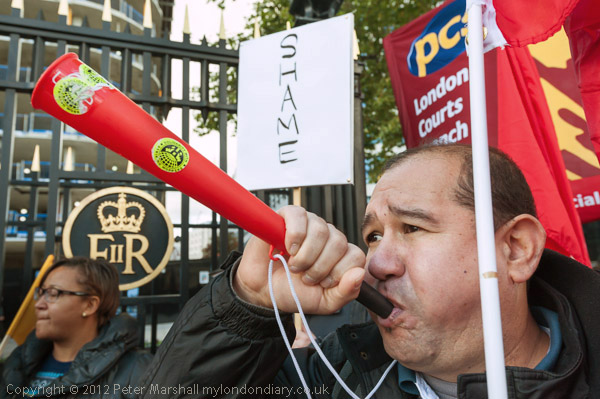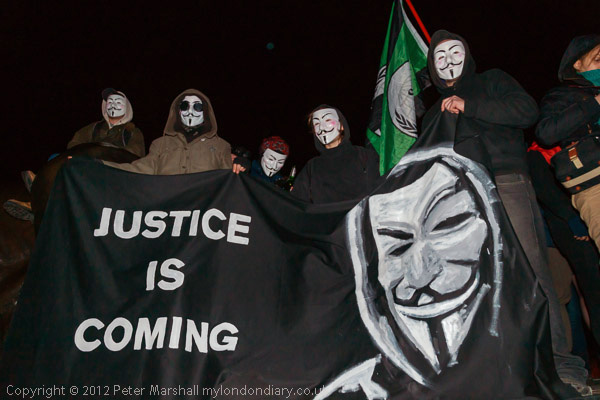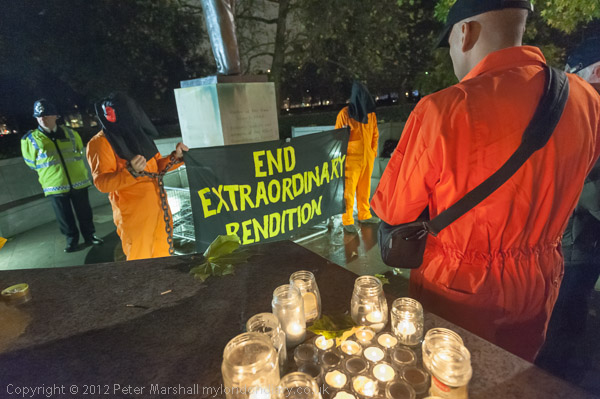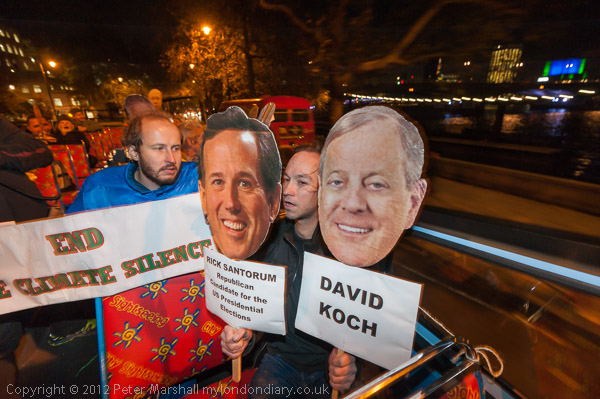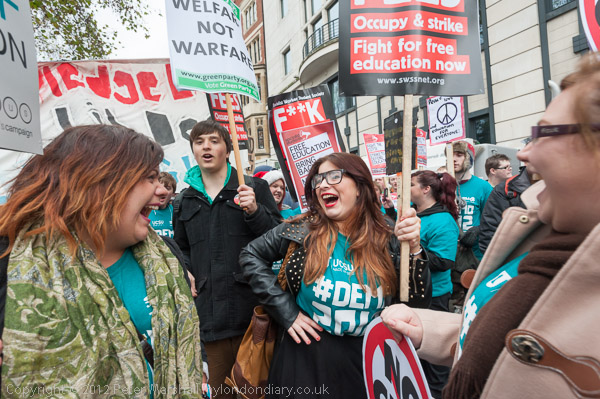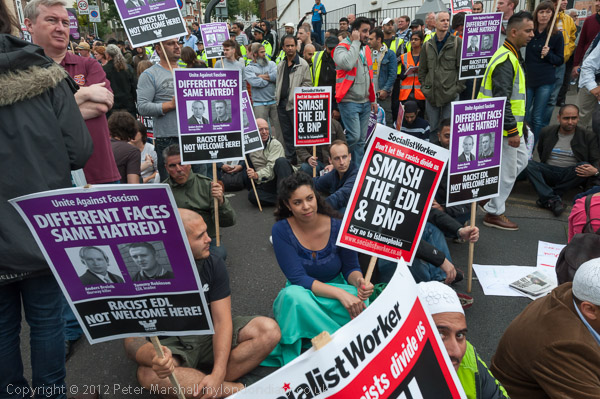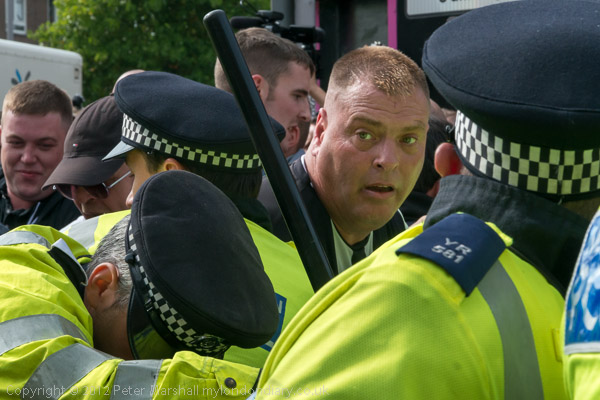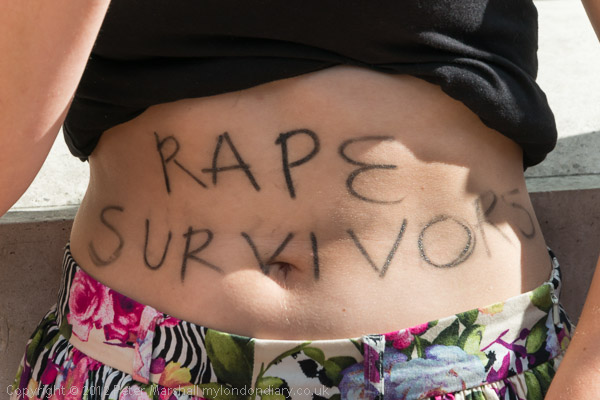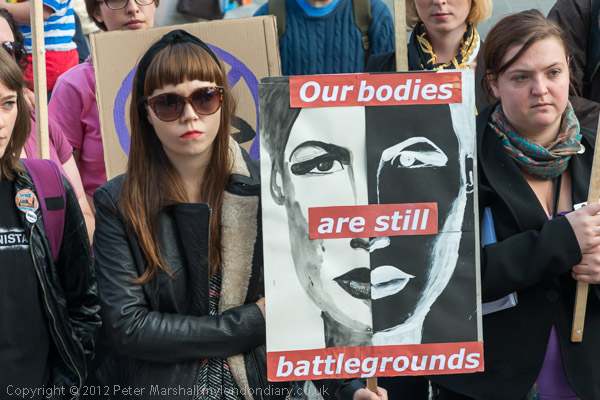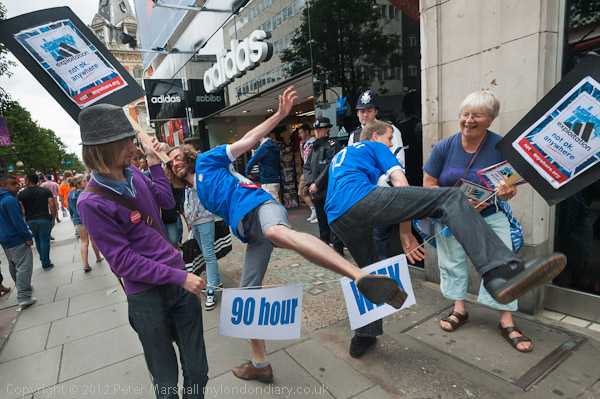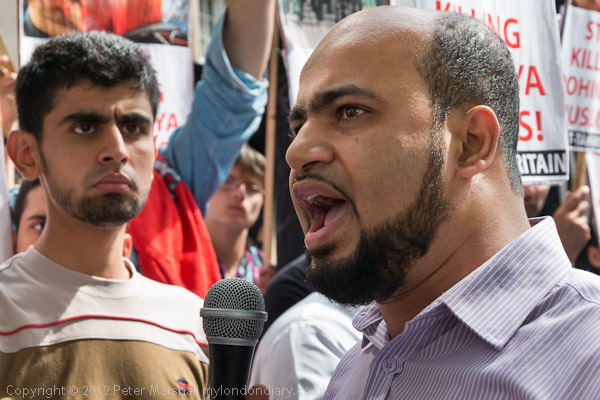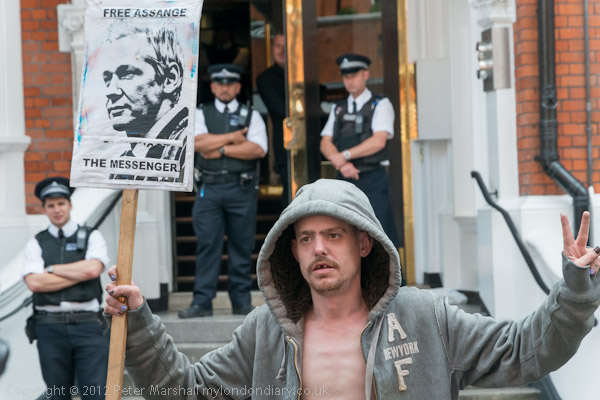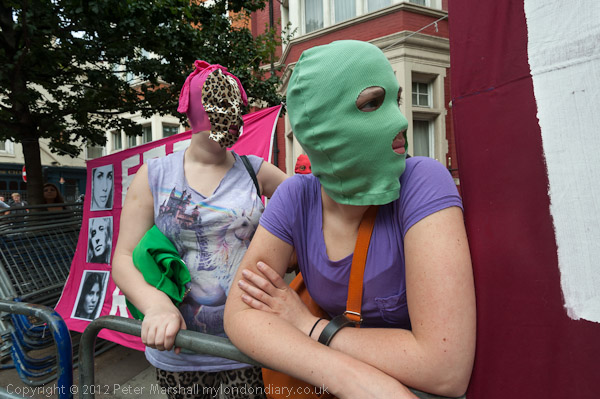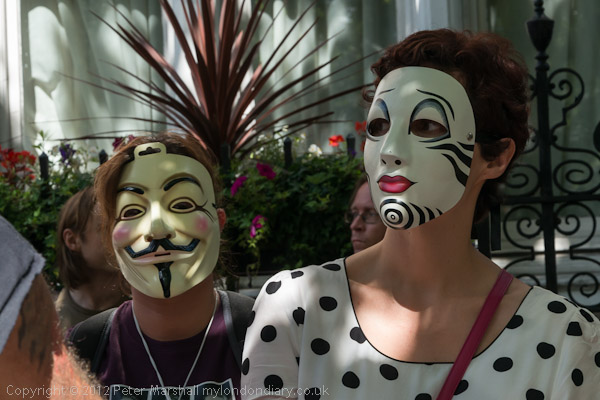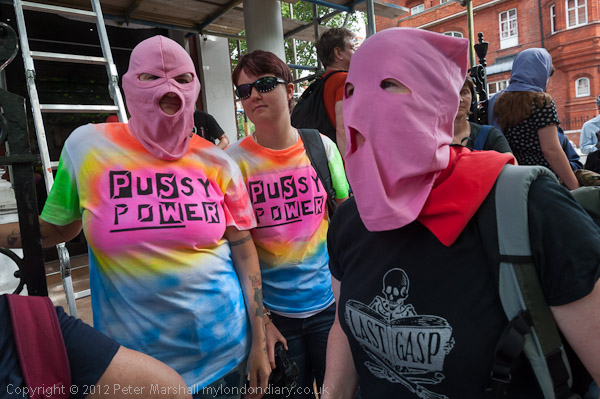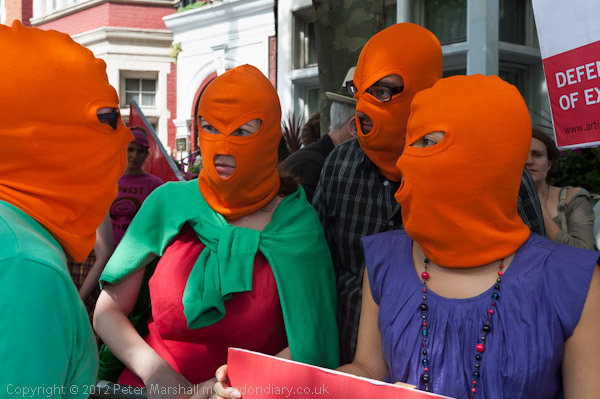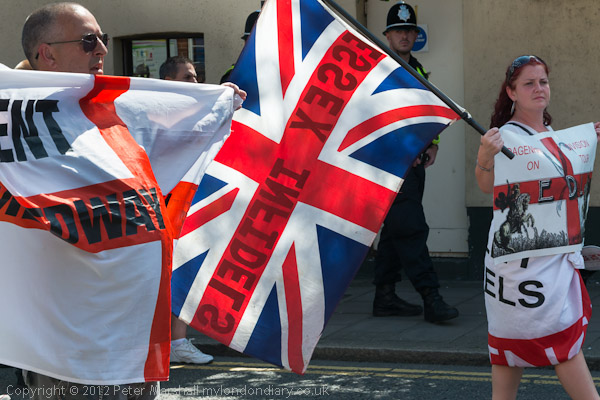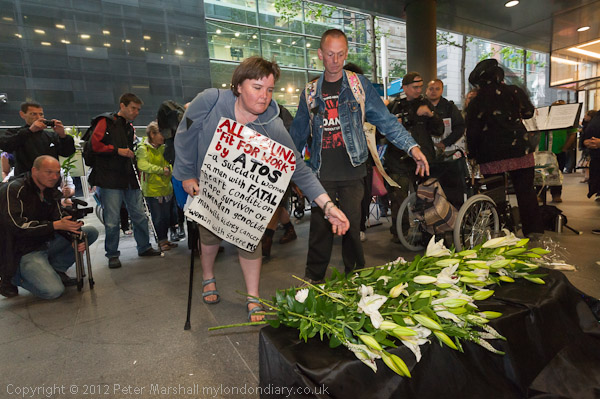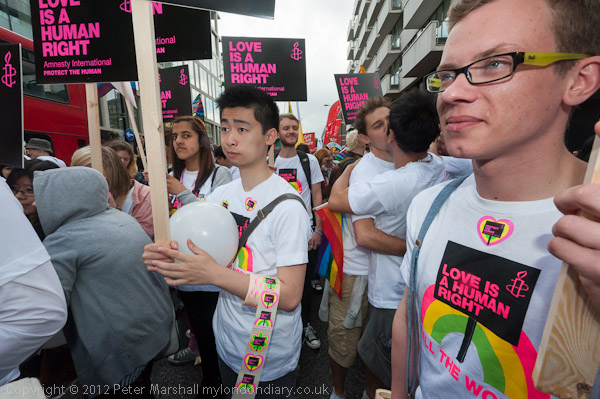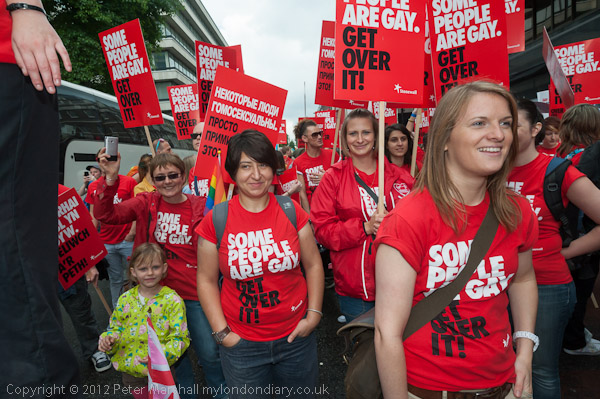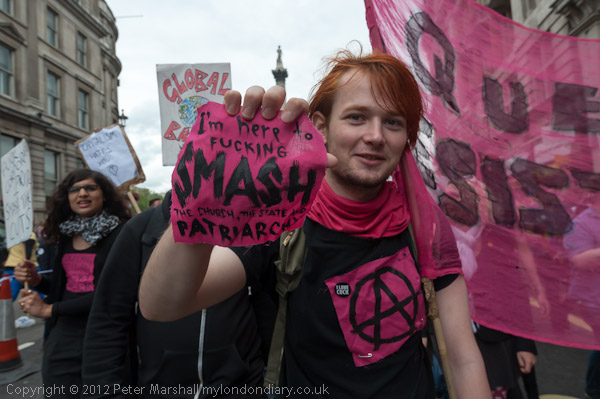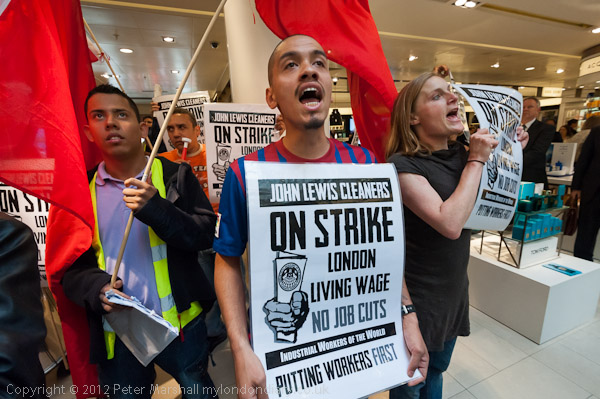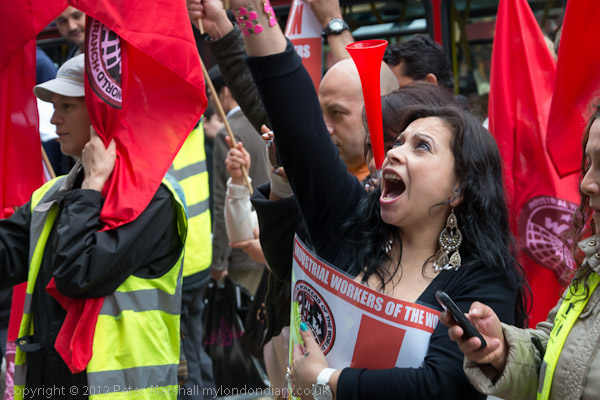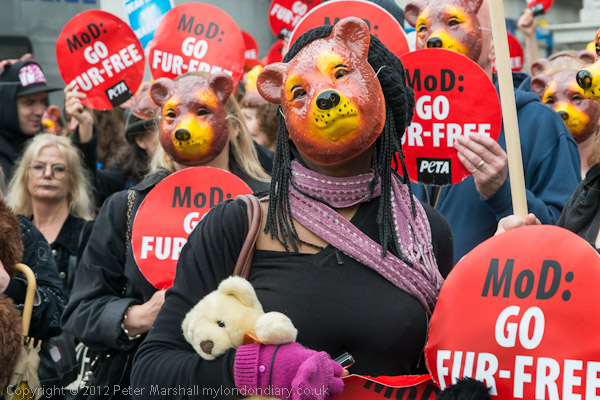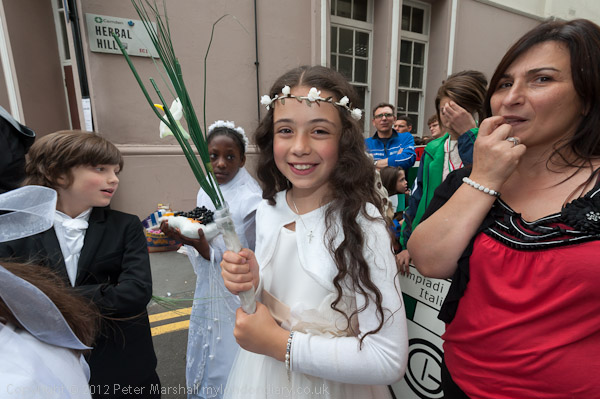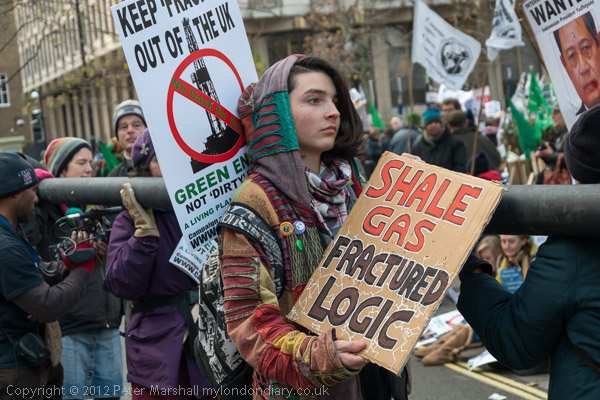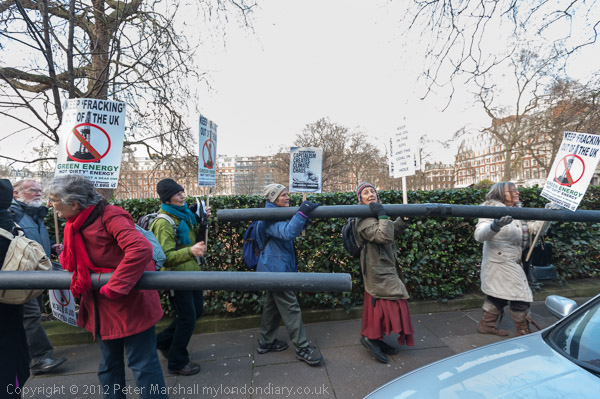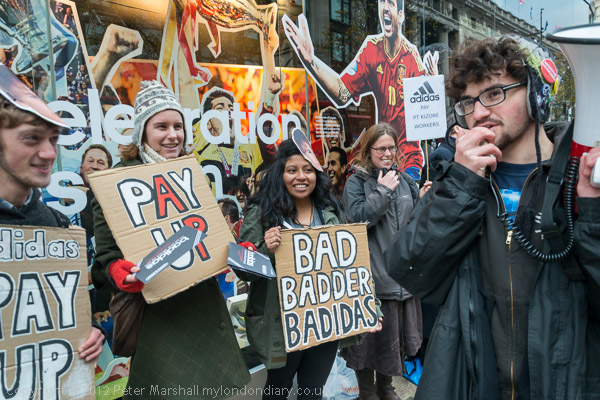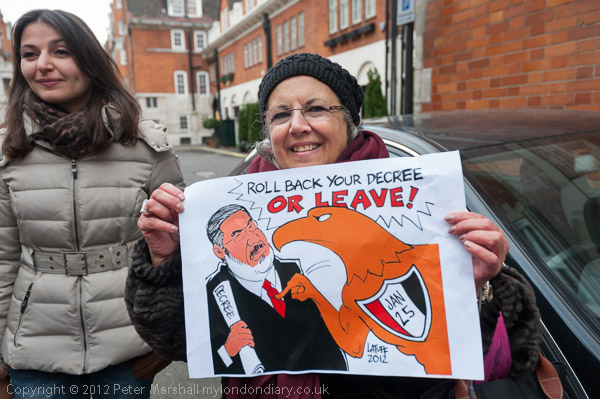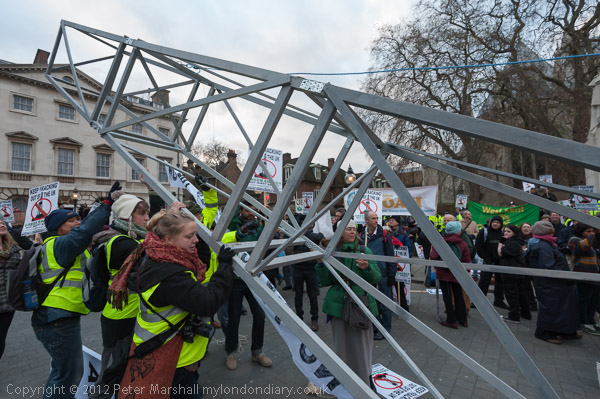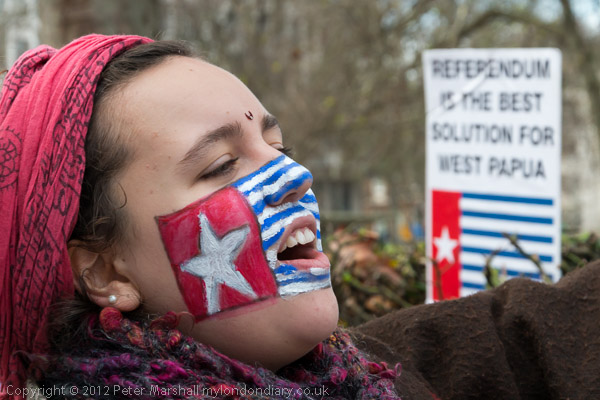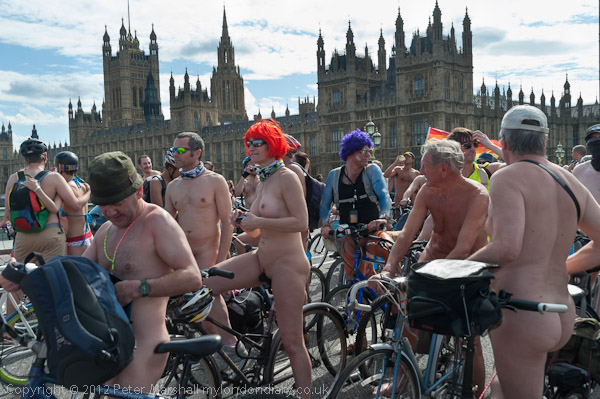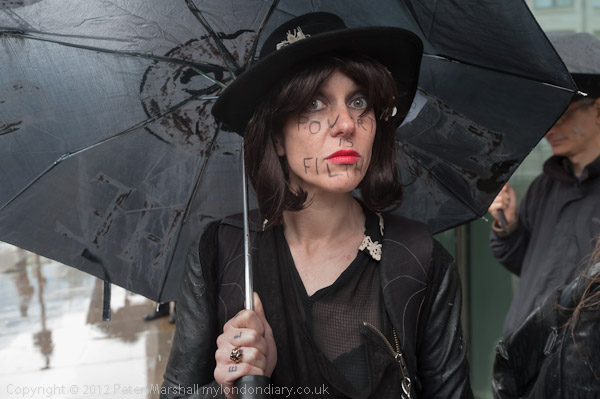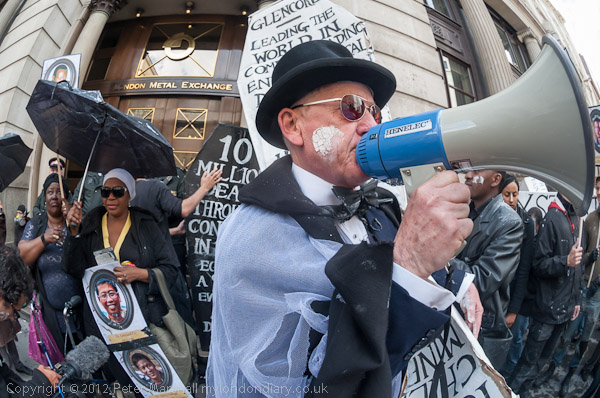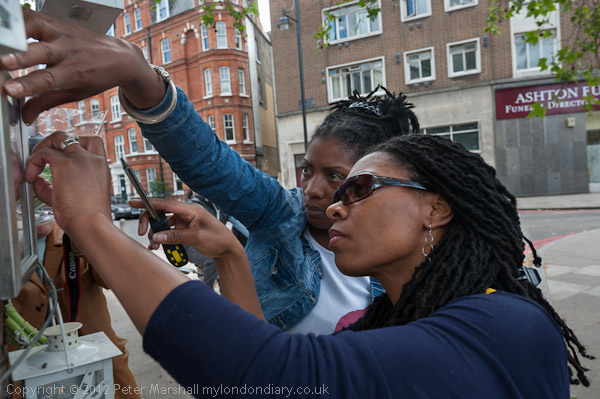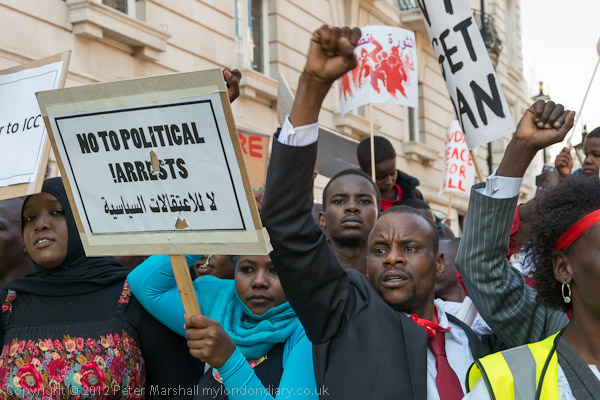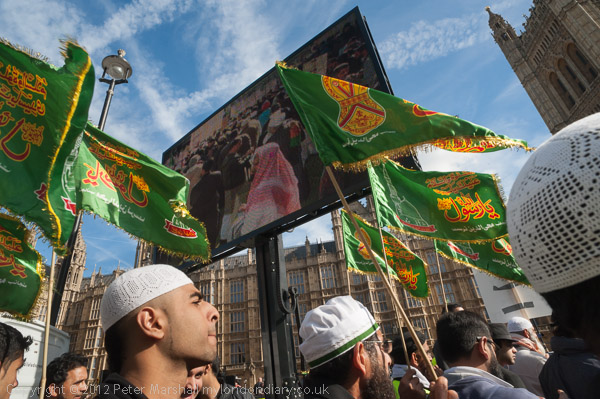
Muslims protest outside Parliament against anti-Islam film
I’ve not watched the YouTube clip that has led to protests by Muslims around the world, and it seems to me that the most appropriate response to such things is to ignore them and concentrate on sending out a positive message. The protests which have led to riots and deaths in some countries seem counter-productive, but at least that in London, although obviously showing anger, was peaceful.
I didn’t find Muslims against Anti-Muslim Film an easy protest to cover, and I missed my 16-35mm which was in for a very expensive repair, and the fixed 20mm f2.8 I was using was not quite wide enough for some situations, though it just about does here. Obviously the flags add some colour, but I was also thinking of them as a way of communicating a message (though as I don’t read Arabic, it was less clear to me exactly what this was), as to was the giant TV screen, although the people here were peering to see the speaker on the stage out of picture to the right. The prayer caps ( taqiyah or kufi) is an important symbol worn by men to show adherence to Islam (although the form of these differs in different countries.) I also wanted to show that the protest was taking place outside Parliament.
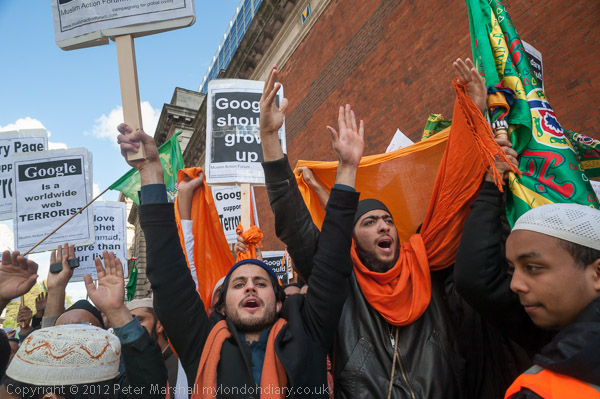
Muslims protest outside Google against anti-Islam film
Later in the month, Muslims protested outside Google (or at least male Muslims did – the womens’ protest was a block away down the street) callling for an End to the Vilification of Islam and I made another picture which I think shows some of the fervour of their protests.
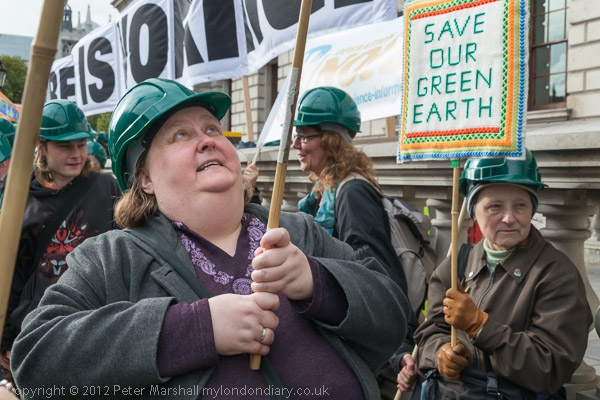
Protest in Whitehall calls for green electricity by 2030
The event calling on the government to move to clean energy by 2030 was perhaps more of a media event than a protest, and was an attempt to try and recreate the iconic ‘Labour Isn’t Working’ Tory election poster, but with people wearing green hard hats and the message ‘Green IS Working.’ I have to say my heart sank when I read the press release explaining this as it will have been obvious to anyone with some visual sense that the idea was just not going to work – and it didn’t. Though the green hard hats did add some interest. I was certainly very glad I wasn’t the ‘official’ photographer whose job it was to produce the picture – though if approached I would have told those who had come up with the idea why it wouldn’t work and turned the job down unless they had changed their plan.
After the attempt to produce this on the Treasure steps facing St James’s Park (and the photographer should have got some usable pictures if not that ‘Saatchi’ image) the crowd walked around to Parliament St and stood around for a while. I asked the person who appeared to be in charge if they intended to protest at Downing St – which seemed the obvious thing to do – but was told that wasn’t at all the kind of thing they would do as it might upset people.
I’ve known the woman holding the embroidered placard ‘Save Our Green Earth’ for years, since my wife worked with her in the 1970s, and have photographed her and her various banners at many protests, and she certainly attracts photographers. But on its own with her banner she didn’t seem to make a powerful image; in this picture it is the closer woman, mouth slightly open and looking up at her flag outside the image as if looking up to heaven, along of course with the other people in green hard hats and banners around that make things work, while the embroidered placard adds its message.
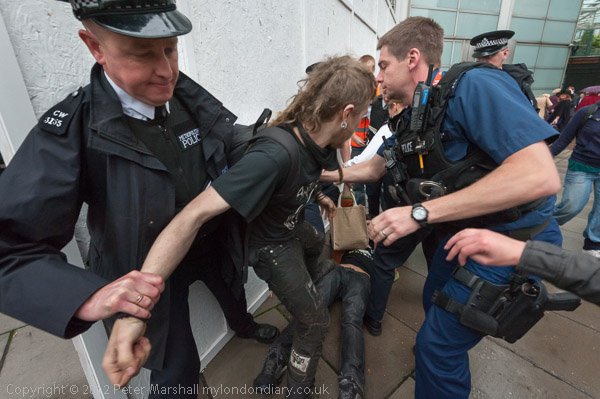
Police grab protester in protest over evictions of travellers
A year after the evictions at Dale Farm – and with more expected – the Traveller Solidarity Network staged a protest, Fight for Sites, that went to serve an eviction notice on minister Eric Pickles at the Department for Communities and Local Government (DCLG), which ended in the pouring rain with scuffles in front of the building and a group of protesters occupying a low roof over the entrance.
One senior woman police officer in particular made the job of photographing the protest difficult by continually shouting out that of course we had a right to photograph while practically denying us the chance by forcing us out of the places we needed to be if we were to take pictures. I was fortunate enough to evade her for minute or two while she was hounding press on the other side of the protest and was pleased to have the 16-35mm back on my camera to take this image at 16mm. I was of course being careful not to get in the way of the police, but that didn’t need me to stand very far away. If anything I was getting in the way of protesters who might otherwise – as the closest man appears to – be moving in to try and rescue another protester who has been grabbed by police.
Part of the reason this picture works is my closeness to the action and the steep perspective that this gives, exaggerating the hand of the officer at the left as he grasps the wrist of the protester. It gave me too the strong diagonal of the protester’s arm from the hand of the officer up to the protesters head and the head of the second officer, with his shoulder and arm leading the eye back into the action.
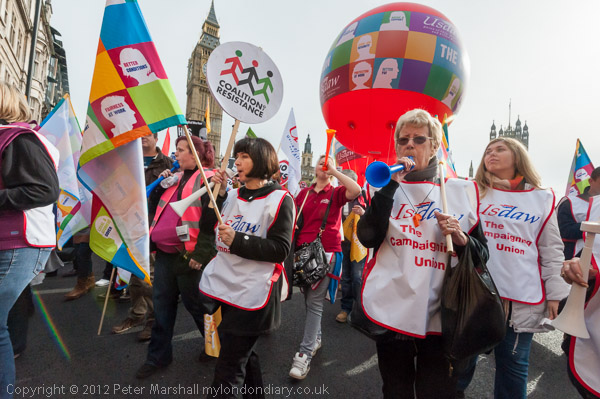
USDAW marchers pass Parliament in TUC march for ‘A Future that Works’
The TUC A Future That Works March on Oct 20 was a large event, even if the numbers weren’t quite as large as in the big TUC march the previous year. This was one of the pictures I thought worked well, with women in USDAW aprons, and USDAW flag and balloon in front of the Houses of Parliament.
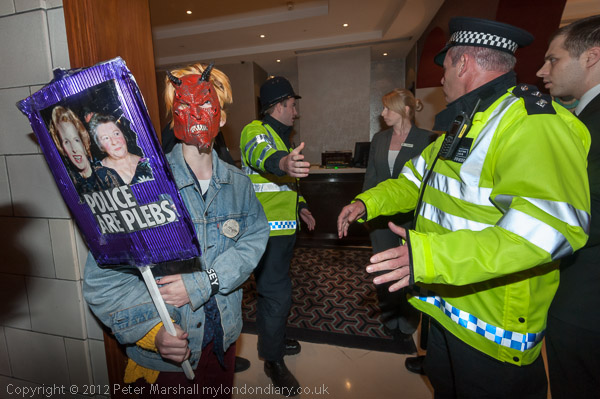
Protester, police and manager in protest at hotel using unpaid workfare staff
From the TUC march I went on to follow Boycott Workfare in their protests around Oxford St against businesses replacing paid workers with unemployed people who have the choice to work for nothing or lose their benefits – Against Workfare and Tax Cheats. Their first call was to a hotel in Great Marlborough St, where I went inside with them.
Police followed in shortly afterwards, and as well as one of the protesters in a devil mask holding a placard ‘Police are Plebs’ the picture shows one of them explaining to the manager that she has to come and tell the protesters they must leave before the police can take action. She seems rather reluctant, but finally did so as you can see in another picture in the story
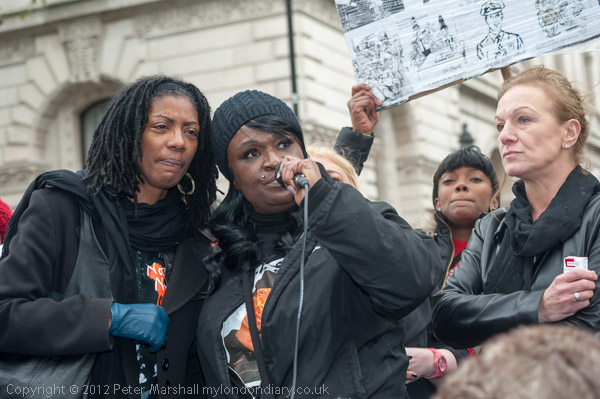
Bereaved members of United Families & Friends Campaign at Downing St
There have been a truly remarkable number of deaths in custody under suspicious circumstances over the years, including many where the only possible explanations are that the deaths were a result of deliberate acts by police or prison officers as well as others involving culpable neglect, but not a single one of the perpetrators of these offences has been brought to justice.
The United Families & Friends Campaign has campaigned powerfully for truth and justice in these cases, and has also been remarkable for the support which the families affected by these crimes have given each other. This picture, on the road outside Downing St, seemed to me to illustrate this, with Marcia Rigg, sister of SeanRigg, killed in Brixton Police station holding Demetre Fraser’s mother as she speaks. At the right of the picture is Carole Duggan, whose nephew Mark Duggan was shot by police last year, precipitating the riots, and behind, holding a placard is Kadisha Brown-Burrell, the sister of Kingsley Burrell (and the woman almost hidden is the mother of Anthony Grainger.) But there are several other images from No More Police Killings, Time For Justice, my report of the annual UFFC march which I also find powerfully emotional.
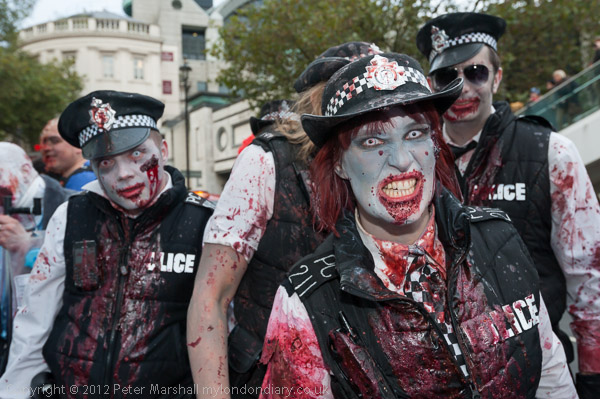
Zombie Police win second prize in Halloween crawl around London
I try to be objective and detached about the police, who I come into contact (usually not physically) regularly in my work. Many of them are polite and helpful and recognise that I have a job to do just as I realise that about them. I often feel they are being ordered to do the wrong things by their political masters, and at times that they do things badly, and that it’s part of my job to record and sometimes comment on this, but I try to treat them fairly.
But on the Saturday before Halloween on the Zombie Crawl of the Dead I found myself with some rather different police. I first met them in a dimly-lit bar and it wasn’t immediately clear whether they were the real thing or not, though this was soon sorted out when one of them showed me his warrant card. They were the well-deserved winners of the second prize awarded by the organisers of the event. I just hope the police had enough of a sense of humour not to arrest these guys for impersonating police officers, although they seem to reserve this offence for those making a political protest.
Continue reading 2012 – My Own Favourites – October
